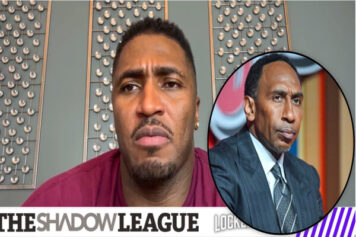What is the definition of a cult classic? It must transcend time and strike to the very heart of a particular subsection of society, its belief system and thought processes. For Generation Xers growing up in New York City there are very few movies that fit this category to the extent that the 1979 Walter Hill directed film The Warriors, inspired by the Sol Yurick novel of the same name. Released on February 9th of that year, the film has been referenced in more rap music than almost any cinematic offering outside of maybe The Godfather and Scarface. Method Man, Redman, the RZA, Nas, Jay Z and many others have referenced the film in their songs at one point or another. Even former NBA superstar-turned-analyst Shaquille O’Neal has been fond of quoting the character Cyrus by saying, “Can you dig it? Can you dig it? Can…you…dig it!” Further solidifying the hold that The Warriors has on the entire hip hop genre, entertainment and fashion mogul Sean "Diddy" Combs' classic battle cry of "Bad Booooys come out and plaaaay…" from the "Flava In Ya Ear" remix with Craig Mack, Notorious BIG, LL Cool J, Busta Rhymes, Rampage and, of course, Sean Combs himself, is taken directly from the film.
The Warriors tells the story of a group of young street gangsters who are framed for murdering Cyrus by their rivals the Rogues. As they make a mad dash towards their home turn in Coney Island problems arise as they are forced to cross the territories of rival gangs. What ensues is a action-packed celebration of gratuitous violence.
Upon realizing the film’s 35th anniversary was near, I sat down to watch it. Its aesthetics awakened a sense of nostalgia within my gut that I had not felt from any film in some time. Memories of humid summer nights on a South Bronx stoop flooded my mind. The New York City subway system is featured prominently throughout the film and all of the subway stations where it was shot have been completely redesigned since the film was shot way back when. Can it be that it was all so simple then? Indeed, it was.
The Warriors’ opening credits rolled in crimson colors on the screen, the old NYCTA subway trains rattled down the tracks, memories of an old New York City that has long been buried became as fresh as the day they were experienced those many years ago. The film depicted in the city is long dead and only exists on an ever shrinking scale in pockets of Brooklyn, The Bronx and Queens. Most of the rest of the city has succumbed to the onward march of gentrification. The once graffiti-dotted subway trains have given way to shiny silver ones that are resistant to graffiti with air conditioning that actually blows cold air instead of stinky, sticky subway tunnel atmosphere, neighborhoods where the police once didn’t dare travel to are now inundated with police officers and streets that were once dominated by prostitutes are now filled with business and the rents have quadrupled in many instances since that time. The mighty World Trade Center has since fallen and a new spire of commerce stands tall on the south Manhattan skyline.
I am sure some that are reading this may misinterpret me waxing nostalgic about this film and the times that spawned it as if the good old days were the best. But please don’t get it twisted. The era this film harkens back to was a troubling time for New York City. The city was recovering from almost going bankrupt in 1975, the Italian mafia was as powerful as ever, and the citywide blackout of 1977 made the once mighty burg the laughing stock of great cities across the globe. Of course, New York would make a comeback. It always does, but the 70s were rough. It was a tough environment that bred tough people. This is the New York City that is the backdrop for The Warriors. I’m not saying it was a good place, nor am I saying it was a bad place, but it was what it was. Some of the action sequences depicted in the film are outdated to the point where they seem quaint by today’s standards. With the way kids are pulling triggers these days, a nice baseball bat rumble would be a refreshing site to see.
As is the case with most films that depict urban violence, conservatives believed the films was a menace to society in itself and that it inspired others to follow suit. But the specter of street gangs had haunted New York streets since before World War II.
Though the grit and grime that inspired the film were real, film critics of the day panned it for being inaccurate and unrealistic. They also claimed the dialogue was stilted. However, it always got love in the hood. As usual, the people on the streets were ahead of the curve as far as what was considered cool to the common man was concerned. It didn’t matter whether it was realistic or whether the actors looked or acted the part. The protagonists were people who urban dwellers of the 70s and 80s could relate to.
In 2011, the film was given a 94 percent rating at Rotten Tomatoes and Entertainment Weekly named The Warriors the 16th greatest on their “Top 50 Greatest Cult Films” list. Comic books, action figures and video game titles on several different platforms have been created to pay homage to the film. As is the case with most cult classics, The Warriors has something that keeps people coming back to watch it over and over again. It has been going 35 years since The Warriors was released and the film has earned over $22 million to date. There are currently whispers of a remake in the works that is to be released in 2014. If they know, like I know, they had better come correct. There are 35 year of fans who will go out like the Gramercy Riffs to make sure it is as true as possible to the original. Considering the time and place in which it took place, I am going to go out on a limb and say it will not even come close.



